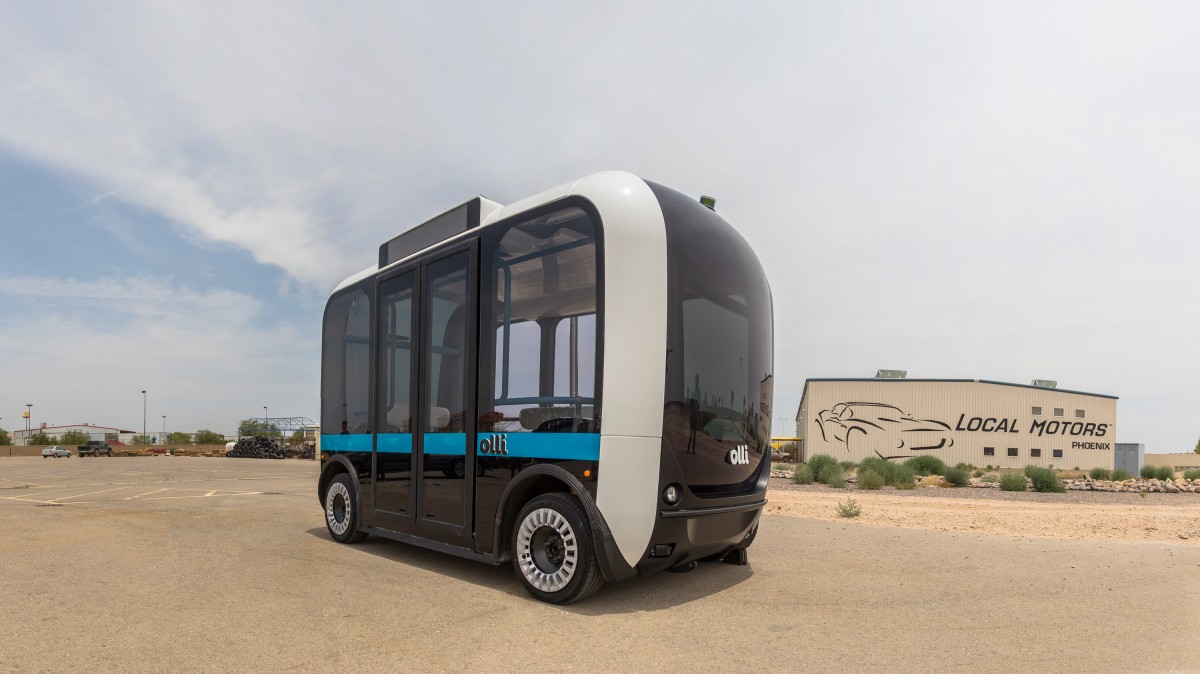
It’s been 15 years since a degenerative eye disease forced Erich Manser to stop driving. Today, he commutes to his job as an accessibility consultant via commuter trains and city buses, but he has trouble locating empty seats sometimes and must ask strangers for guidance.A step toward solving Manser’s predicament could arrive as soon as next year. Manser’s employer, IBM, and an independent carmaker called Local Motors are developing a self-driving, electric shuttle bus that combines artificial intelligence, augmented reality, and smartphone apps to serve people with vision, hearing, physical, and cognitive disabilities. The buses, dubbed “Olli,” are designed to transport people around neighborhoods at speeds below 35 miles per hour and will be sold to cities, counties, airports, companies, and universities. If the buses enter production in summer 2018, as planned, they could be among the earliest self-driving vehicles on U.S. roads. Since Olli is fully autonomous and does not have a human driver, it uses IBM’s AI-powered Watson technology to converse with passengers (via voice and text displayed on an iPad). Olli navigates using radar, lidar, and optical cameras from a company called Meridian Autonomous. Before deploying in a neighborhood, Meridian Autonomous constructs 3-D maps of the area…